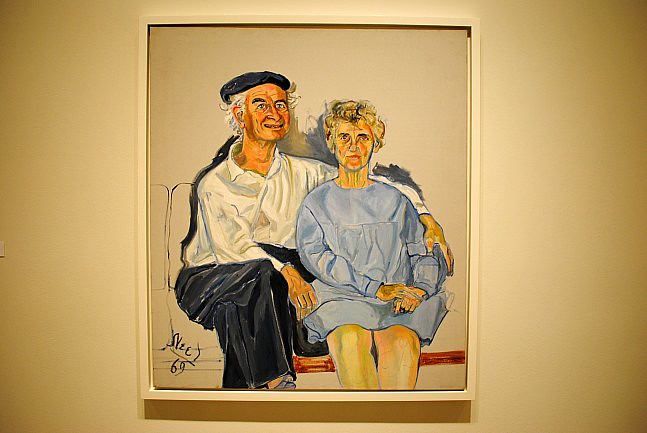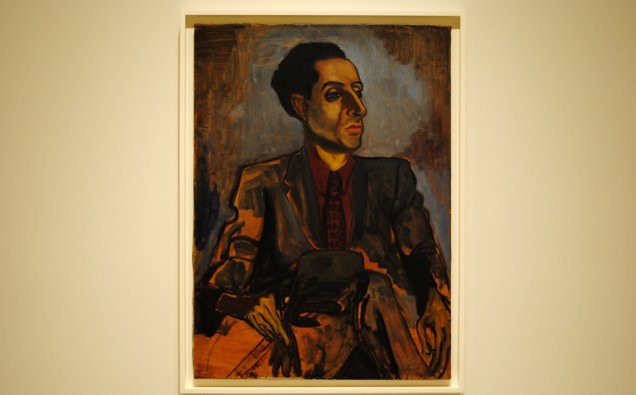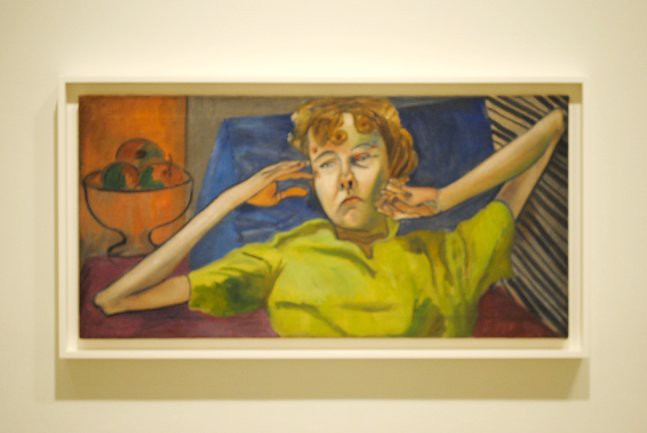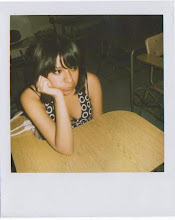On occasion my fellow students would make me laugh, but at the end of the course many quite impressed me. For example, the most memorable moment was when Wood tried to explain the difference from surrealism, conceptualism, and all the isms of the post war period. I recall a certain student demanding Wood to explain to him why Cy Twombly was in collections of major museums, pushing it to an extent of existential questioning of what makes an artist. However, hearing the sweet words from a student comparing Alice Neel to Egon Schiele’s work was truly sweet victory. I felt proud of Wood, and of the student. Perhaps, my true passion in life is teaching… Growth is difficult, but growth always proceeds in length.
Alice Neel from SeeThink on Vimeo.
Through out the ripples of an art theory course we were lucky to watch the famous Alice Neel documentary, directed by Neel’s grandson Andrew Neel. While over at LA Louver sixteen of Neel’s works were currently on show.

LA Louver: At First Glance
Alice Neel , celebrated as much as she has been ignored. With an artistic career span from the 1920’s in Philadelphia to her death in 1984 in New York City. Neel appreciated her role of historical collector, and she transcends this in her portraiture by depicting figures from different sectors of interests. Those including Andy Warhol, Horace Clayton, and human rights activist Ava Helen. Her departure from Greenwich Village and the art world in it’s entirety makes Neel a true self statement. With her relocation to Spanish Harlem Neel meets yet again another lover and the father of her oldest son Richard. In Spanish Harlem Neel documents her new neighbors, friends. Once again, Neel makes her new encounter with the artistic community of New York City in the sixties, when she relocates to the Upper West Side. Making for an eclectic set of works that quickly grew out of her apartment. Stacked canvas; books on a bookshelf. All ranging, but quickly picking up to what she’s best known for today: a historical recollection through painting.

Linus and Ava Helen Pauling (1969): The joys of old age
Neel’s sixteen works are distributed on the first floor galleries of LA Louver. Three rooms bring together this tiny in scale retrospective of the artists work. In the furthest left room of the gallery, tucked away, is the exhibitions earliest work -- Sam Sea Biscuit (1940), a portrait of Neel’s lover, Sam Brody and father to her son Hartley. Sam Brody was a popular left wing leader, and a critical component to film making during the great depression era. Emphasizing on documenting the great depression.

Sam Sea Biscuit (1940): Sam Brody
The feeble effects of the post war era in the United States were visible everywhere if not especially in the arts. However, modernism had not fully marked territory in the states. While in Europe theories had been in practice since the beginning of the impressionist movement. Nonetheless, there were some artists in the states practicing the avant garde styles of Europe. Alice Neel, considered a realist painter whose primary genre was portraiture. However, I feel that she was indeed a modernist artist. Perhaps, not so avant garde, but her style evolves…
Alice Neel Recognized for her vast collection of portraiture but in Sam Sea Biscuit (1940), we see traces of tangible play, if even as a minimal approach to abstraction. The background like most of Neel’s backgrounds is abstracted with different hues of dark blues, but with a more rigid attempt at abstraction. Traces of Rothko’s painterly ways set the mood in this particular work. While all of this is taking place, the subject sits firmly in profile. Brody’s rigidness delivers throughout the work, as well as his full forced approach which serves as an impression of his own personality-- a true intellectual, in all forms ( critic, photographer, left wing leader, and filmmaker). A feat not easy to accomplish, but quite natural of Neel’s work. Neel unmasks her subjects through her pieces, as it’s evident in Brody’s portrait. No wonder every critic since the seventies has coined Neel’s famous phrase-- “a collector of souls”.

Peggy (1960): Distressed
Neel’s portraiture is driven with emotion, but certain pieces like Peggy ( ) literally shout emotion. Peggy (1960), a friend of Neel who became victim of an abusive partner. The stillness of Peggy (1960) parallels with the stillness of a fruit bowl, on the far left foreground. If not one of the most important pieces in this show, it is the one who is most driven due to it’s subject matter.
My favorite piece in the show is the tentative first trial at Red Grooms and Mimi Gross portrait. The flurry of the connectionless mood in the piece won me over the instant I walked in the room. Alice captures the pseudo love Red Grooms shared with his then wife Mimi Gross. Red Grooms and Mimi Gross final painting is motionless in my opinion. Red Grooms and Mimi Gross No.1 (1967) is by far my favorite piece, compared to the original finished work. Quite interesting, Red Grooms and Mimi Gross separated just after the work was completed. Talk about great counseling or the slap of truth.

Red Grooms and Mimi Gross No.1 (1967): The Fake Lovers
Alice Neel- Paintings
May 20 - June 26, 2010
LA Louver Gallery
45 North Venice Boulevard
Venice, CA 90291-4127
(310) 822-4955

No comments:
Post a Comment